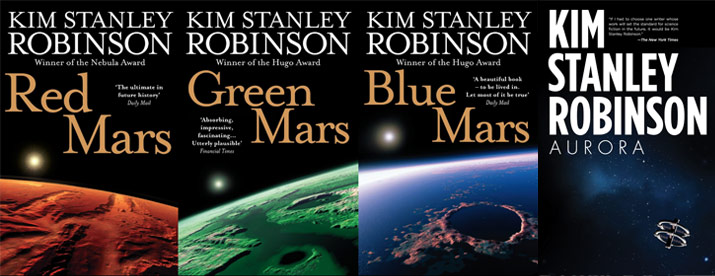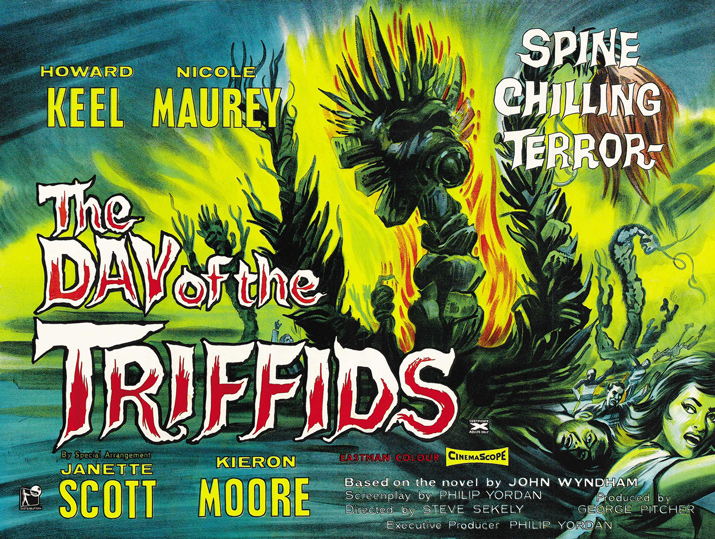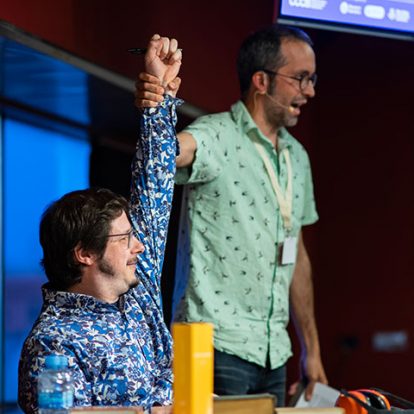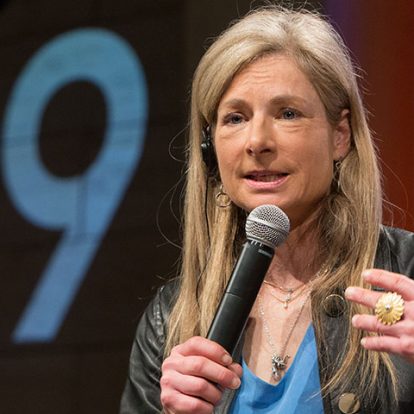The Literature of Change
Eva Rexach
19 January 2017
Science fiction literature is about apocalyptic worlds and dystopian futures in which climate change menaces the survival of the planet. But some writers, such as Kim Stanley Robinson, tell a different story. This is the literature of change.
“Not all the winds, and storms, and earthquakes, and seas, and seasons of the world, have done so much to revolutionize the earth as Man, the power of an endless life, has done since the day he came forth upon it, and received dominion over it.”—Horace Bushnell.
Does the name George Perkins Marsh ring any bells? Probably not. But this lawyer, farmer, newspaper editor and diplomat was the first person to talk about the effects of global warning and the abuse of natural resources. He did so in no less a place than the United States Congress, where Marsh (a republican congressman, who spoke 20 languages, mostly Scandinavian in origin) made an almost prophetic speech. The year was 1847. Some years later, in 1864, Marsh published Man and Nature, or, physical geography as modified by human action, considered the first text to address the issue of climatic change and humankind’s effect on the planet. The text is prefaced by a quote from US theologian Horace Bushnell, who also heralded what we know today as the Anthropocene.
If we are still talking about Perkins today it is because 160 years after that prophetic speech, his work is still cited in the United Nations resolutions on climate change. It is a subject that goes back a long way and still continues to concern the international community. Perkins’ book is not a work of fiction, but this was the first time the idea appeared in writing. It was some years before it first became popular and emerged as a literary theme.
In his short story Yellow Coal, written in the 1920s, Sigizmund Krzhizhanovsky described a world affected by global warming. This first mention in literature also went fairly unnoticed until, in the 1960s, J.G. Ballard published The Drowned World, The Wind from Nowhere, The Drought and The Crystal World, all dystopian works about a catastrophic world suffering from the consequences of climate change. Ballard was the most prolific author on the subject until the appearance of new writers who have now popularized science fiction stories about climate, known as “cli-fi“, or climate change literature.
The hero of the environment
In 2008, Time magazine called Kim Stanley Robinson a “hero of the environment” for his literature that challenges climate change with futuristic stories which, far from being dystopian, offer an optimistic future. His characters tend to be scientists (“Science is—or should be—the greenest science of all”, he says), and ecology, social justice and nature are recurrent themes in his work.
The Mars trilogy (Red Mars, Green Mars and Blue Mars), written in the nineties, is his principal contribution to science fiction. Arthur C. Clarke called the first of these novels, winner of the prestigious Nebula Award, “The best novel on the colonization of Mars that has ever been written”. At Kosmopolis, Kim Stanley Robinson will be talking with Ian Watson, futurist writer, author of the screen story for the Spielberg film AI, and co-organiser of Eurocon festival, held at the CCCB in November 2016.

Intelligent plants
The news broke in September 2016: scientific proof shows that we have entered a new geological era, the Anthropocene. Humans have now left an irreversible imprint on the planet, and the worst thing is that the consequences affect not just our species, but all the species that inhabit the Earth. Some scientists are against the term because they consider it—pardon the redundancy—too anthropocentric. One such is Timothy Morton, creator of the concept of dark ecology (read more about it in this post in the CCCBLab’s blog: Ecology without nature), who defends the idea that nature itself is a concept created by humankind, as though we were not part of it. For Morton, it is a mistake to see nature from a human viewpoint, which is why he proposes an anti-anthropocentric reinterpretation of our relationship with the world.
Along these same lines, there is a whole scientific current that is moving away from anthropocentrism to concentrate on our closest neighbours: animals and plants. Stefano Mancuso is a representative of this trend. Director of the International Laboratory for Plant Neurobiology at the University of Florence, Mancuso is a defender of the intelligence of plants, which allows them to communicate with each other and have a “social life”. The idea was suggested in a novel back in 1951, The Day of the Triffids, a terrifying story about an apocalyptic world invaded by strange plants that attacked humans and left them blind (could we not see the damage we were doing to nature?), but back then it was just an idea of science fiction literature. Today, we know for a fact that plants have their own intelligence, which is why we talk about plant neurobiology, and that they can communicate with each other (as you can see in this video, How trees talk to each other).

Hope Jahren, the US geobiologist considered one of the 100 Most Influential People today according to TIME magazine, will also be talking about plants. In her books, Lab Girl, this scientist conveys all her love and passion for science and specifically for plants, to which she has devoted her career. According to The New York Times, Jahren is to botany what Oliver Sacks was to neuroscience: the perfect combination in one person of science and letters. Pure Kosmopolis.
Animals with almost human rights
According to the WWF, every year between 10,000 and 50,000 species go extinct. From the dodo, the first animal to be made extinct by man (immortalized by Lewis Carroll in Alice in Wonderland), to the Baiji dolphin, assumed extinct in 2006, the list of animal species that have disappeared as a result of human activity is regrettably long. Perhaps if we were more aware that animals, like us, are intelligent beings with a heart of their own, we would realise that they deserve more respect.
This is the line of work of conservationist and writer Carl Safina, the first occupant of the Chair for Nature and Humanity at Stony Brook University. Safina will be at Kosmopolis to talk about non-human intelligence: just like plants, animals have their own intelligence that allows them to communicate with each other and their environment. But if a judge can rule that an orangutan is a non-human person and therefore has rights that must be respected, what is it that makes us human?
Beyond the crime novel
Scandinavia is the place to be when it comes to crime fiction, but it’s not all detectives in the snow. Jo Nesbø, the famous creator of Inspector Harry Hole, also wrote the screenplay for Occupied, a dystopic series on Norwegian TV about a future where oil and gas production have stopped. To deal with the energy crisis, Norway is forced into an agreement with Russia that is a de facto occupation of its territory. According to Vanity Fair, the story foretells the geopolitical future of Donald Trump, who has placed a climate change denier in charge of the US environmental agency.
And also on the theme of climate change, the regular Kosmopolis slam will be a word battle inspired by nature, the Earth and animals. National and international poets will be taking part in this GreenSlam and offering us a poetic vision—hopeful or otherwise—about the future and the present of the planet.
Kosmopolis is back and bang up to date with “When everything changes”, a programme that examines the biggest challenge facing us as a species: the future of our planet. As ever, literature is way ahead of a reality which, for some, is still fiction.









